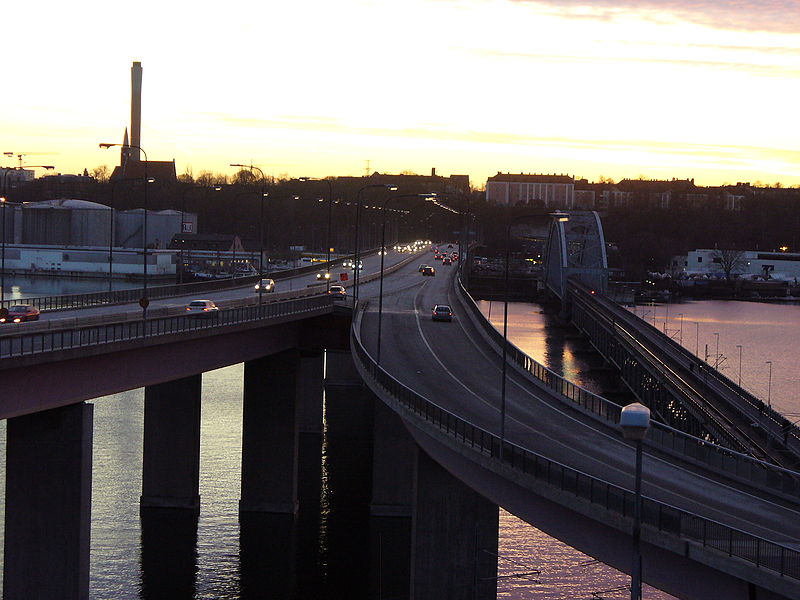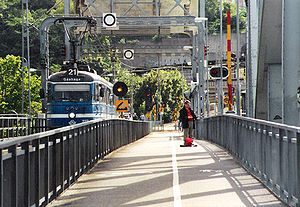| |||||||
Europe
North AmericaSouth AmericaAsiaAustralia and OceaniaAfrica |
Смотрите также: Lidingo Bridge Lidingo Bridge (Lidingöbron) is the name of two existing and two historical bridges across the strait of Lilla Vartan between the mainland Norra Djurgarden at Ropsten, at the eastern part of Stockholm - and the island of Lidingo.
Lidingo Bridge The new bridge, inaugurated in 1971, is 997 metres long, 24 metres wide, and offers a horizontal clearance of 12,5 metres while the roadway passes 75 metres above the bottom of the strait. The part of the bridge passing over water, 724 metres long, is made of double box girders with a maximum span of 73,5 metres, the entire construction resting on steel poles filled with concrete.
History First pontoon bridge At a parish meeting in 1802, the inhabitants of Lidingo, at the time a mostly agricultural district, decided to open a venture to realize a pontoon bridge connecting the island to Stockholm. The 50 shares of the company had to be redeemed by contributing to the project with timber, work, or money and the bridge was completed in 1803; almost 800 metres long, 7 metres wide and financed by tolls. It was one of the longest bridges in Europe. It had a hard time surviving the annual ice break-up, and a third of it was demolished in 1811, and most of it in 1858 - each time raising the price for milk in the capital, as most of it was produced on Lidingö at the time.
Second pontoon bridge With the creation of the harbour of Vartan, the original bridge obstructed shipping in the strait, and it was therefore bought by the city of Stockholm in 1883 who replaced it 1884 with a new pontoon bridge, 12 metres wide and with two moveable sections at each end for the passage of ships.
The level of the roadway was only 10-15 cm over the water surface however, so even moderate winds made crossing the bridge a tough experience. The lateral stability of the bridge was ensured by means of logs attached to the bridge every 24 metres and anchored to the bottom. The use of logs instead of chains effectively increased the bridge's general buoyancy at the cost of its stability during low tide - the bridge often serpentined its way across the water while the inclination of the roadway at the two ends made use of extra horses necessary. Heavy trucks started to use the bridge, for which it was not constructed. Ice break-up destroyed a third of the bridge in 1918. Comments: 0 |
|
|||||











































